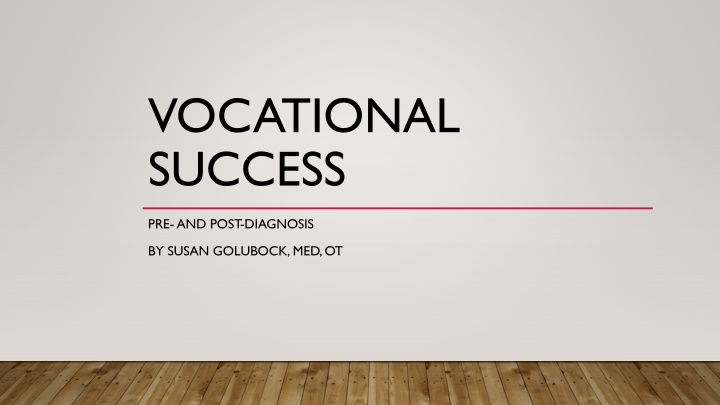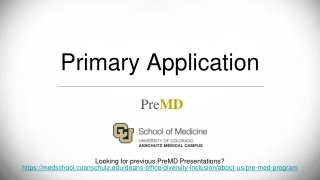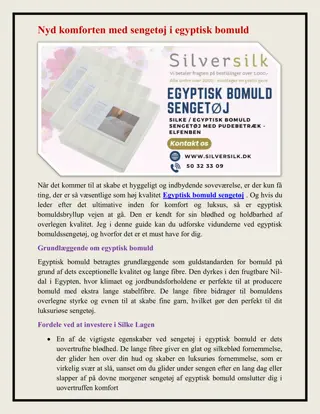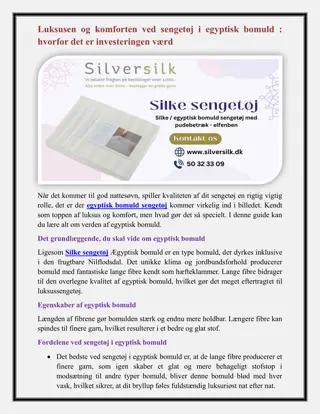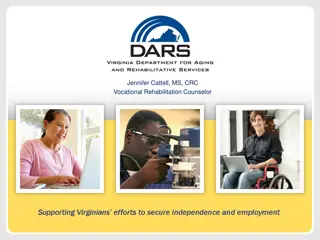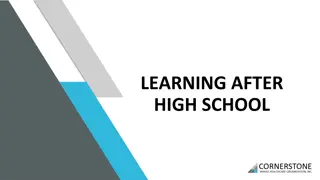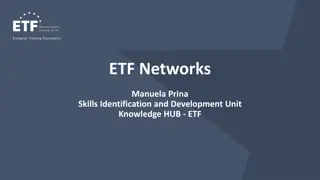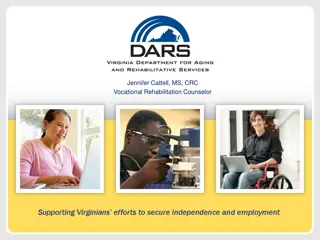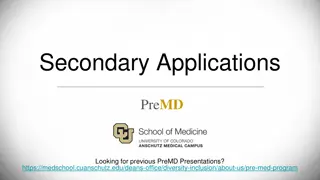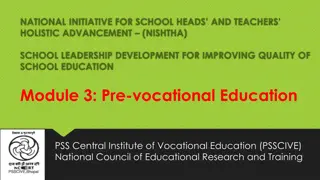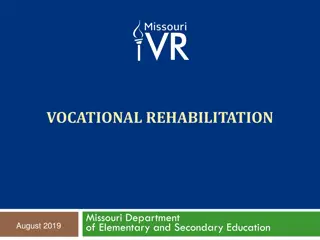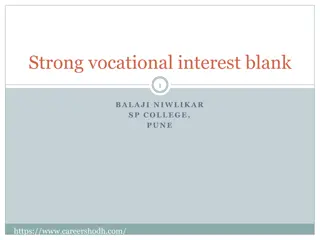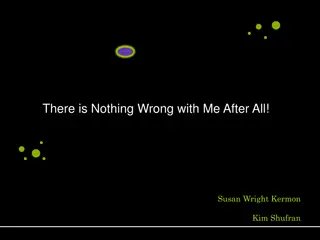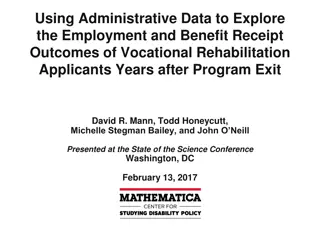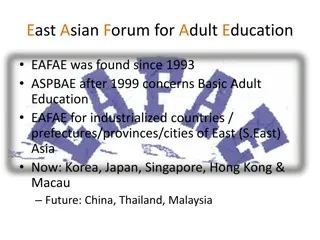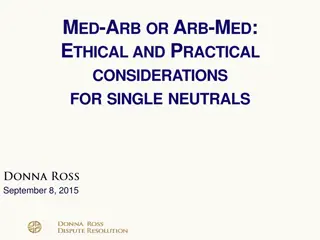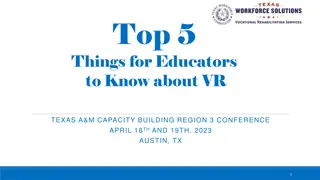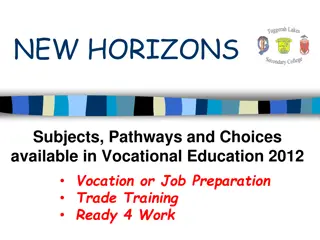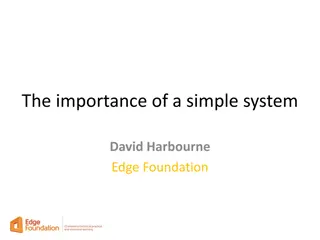Vocational Success: Pre and Post Diagnosis by Susan Golubock, Med, OT
This narrative by Susan Golubock, a med professional and occupational therapist, sheds light on her journey towards vocational success before and after diagnosis. From childhood to adulthood, she navigated challenges with sensory issues and social interactions, ultimately carving a career path that aligned with her strengths and limitations. Despite facing obstacles, Susan's internal self-awareness led her to choose a fulfilling career in the medical and educational fields, demonstrating resilience and determination in pursuing her goals.
Download Presentation

Please find below an Image/Link to download the presentation.
The content on the website is provided AS IS for your information and personal use only. It may not be sold, licensed, or shared on other websites without obtaining consent from the author.If you encounter any issues during the download, it is possible that the publisher has removed the file from their server.
You are allowed to download the files provided on this website for personal or commercial use, subject to the condition that they are used lawfully. All files are the property of their respective owners.
The content on the website is provided AS IS for your information and personal use only. It may not be sold, licensed, or shared on other websites without obtaining consent from the author.
E N D
Presentation Transcript
VOCATIONAL SUCCESS PRE-AND POST-DIAGNOSIS BY SUSAN GOLUBOCK, MED, OT
Parents and siblings were aware of differences Preferred self-stimulation vs. being cuddled Vocal play vs. verbal communication Play with clothes pins vs. siblings Praised for being like others so strived to be like others Learned facial expressions via Shirley Temple movies Accepted passive roles in play with siblings Adopted Just there role in interactions with friends and later on dates fixed up by sister SETTING THE STAGE: PRE-DIAGNOSIS SUCCESS (BIRTH-17) Childhood and adolescent goals based on perception of what others expected from or wanted for me Used freedom from chores due to encephalitis at age 11 to Learn more about people through historical novels But also obsessed on mystery books and Star Trek Success! Accepted by others as shy , an egghead , and later nice but no personality BECAUSE still clueless about social interactions
Choice of career based on awareness of limitations and strengths Strengths: interest in the brain led to medical and educational fields of study Limitations: sensory issues with touch eliminated nursing and physical therapy Sensory issues with noise and overload limited teaching OT met need for 1:1 interaction without touching plus enjoyment of arts and crafts (objects rather than people) INTERNAL SELF- AWARENESS LED TO VOCATIONAL CHOICE OF CAREER (18) Setting goals based on knowing one s own strengths and limitations Because of continued dependence on others, parents insisted on college away from home Mother still buying my clothes Sister arranging dates for me Success! Faced going out into the world alone DESPITE having an out-of-body experience getting there
Focused on my obsession with the brain through studies Anatomy Neurology Psychology COLLEGE: COPED WITH ANXIETIES BY GOING OUTSIDE OF COMFORT ZONE (19- 21) To meet need to understand social relationships: Joined a sorority to learn how women think and what they do Got support with dating by being fixed up Expanded knowledge of the world via Asian Humanity Seminar Learned about other cultures/perspectives in structured setting Hung-out with roommate & her Hippy-Dippy Jeep Friends Seeking to learn what I didn t know through experiences, not just books Success! Using gut feelings met and agreed to marry my husband (a student on the trip) DESPITE being hospitalized from exhaustion before then
Marriage: Relied on rules, should s and supposed to s to navigate marriage Learned from and relied on spouse for interests and social relationships (tennis and gourmet meals) Adapted to moving with husband to new environments with new languages Success! Despite constant physical gut problems Career: Set and achieved intellectual goals SUCCESS IN HANDLING A CAREER AND MARRIAGE (22- 48) Using what I learned from experience to get around life s challenges toward goals I set for myself From Psychiatry to Neurology to School-based practice (elementary to middle and high-school) to Autism School to Private Practice Learned to hyper-organize, pre-plan, and script to stay functional Success! Finally understood how others were different from me BUT still didn t really understand self
School-based OT led me to awareness of Aspergers Syndrome Diagnosis of Asperger s Syndrome given to adolescent client Recognition of self in pre-schooler referred for autism assessment Recognition of self in readings of autistic adults Temple Grandin Donna Williams Liane Holliday Whilley EMERGING AUTISTIC SELF: PRE-DIAGNOSIS (49-50) Desire to connect via internet groups Encephalitis support group (Elaine) Autism Network International (Kim) Seeking knowledge and relationships because they had meaning to me Sought diagnosis Autism Resource Specialist who thought I was already successful Internet discovered Psychologist who blamed my religious upbringing Success! Beginning acceptance of my self DESPITE failure of others to recognize me and my own fears of rejection
Disclosure to and growing independence from husband Prose and poetry Kim in Saskatoon Moved from Low to High maintenance in relationship Bits of revelation to tolerance Elaine in California Husband supported trying again for a diagnosis Asked Parent support group for referral Finally diagnosed as PDD-NOS and later Asperger Syndrome EMERGING HIGH MAINTENANCE SELF: POST-DIAGNOSIS (50- 60) Became involved in speaking and organizing at Autreat (Autistic Retreat) to learn from other autistics Sought disclosure at work Started asking clarifying questions of individuals Felt comfortable showing and explaining self to others Conflicted about self-advocacy vs. self-reliance in accepting help Discovering wants, needs, and emotions not linked to what others wanted for or from me Shared professional/personal knowledge as autistic at conferences as speaker Attending workshops on autism only added to personal/professional conflicts Success! Finally able to ask rather than hide what I didn t know, and experience being myself WITH support from husband & autistic peers
4 years of help by psychiatrist to let go of anger through CBT Use of OT profession to seek answers to personal challenges Homeopathy Sensory Defensiveness Executive functioning Supplements/diets Auditory processing Hemispheric Integration POST-DIAGNOSIS GROWTH PERSONALLY AND PROFESSIONALLY (60- 72) Sought Master s Degree in Assistive Technology (to make life easier) Autistic Support Group: sharing & seeing evolution of self and peers Social/emotional relationship development in marriage & career Finally recognized role of humor and politeness in communication Experienced being taken advantage of by aspie peer Became aware of friendship overtures and steps in relationships Learned about gradations in emotions and choices/ consequences in dealing with my own and others emotions Setting goals based on own needs as well as needs of others Became caregiver to husband; started seeking help from others Success! Able to enjoy having friends and giving of self to others without losing my now-independent self
Awareness of strengths and acceptance of limitations as a person Constantly setting goals motivated by my own wants/needs. Perseverance: trying again despite failures without repeating them Knowing that there are always choices then learning what they are and their consequences (involves asking and discarding) SUCCESS BASED ON HINDSIGHT Willingness to work outside of my comfort zone to accomplish a personal goal (facing fears/anxieties) Remembering that success can only be measured by myself not others Moving from surviving to thriving; then giving back Seeking and trusting others who will support my self and my goals. Not relying on others who only want something from or for me. Accepting and valuing differences in others if I want them to accept and value mine (awareness of everyone having a story to tell) Supporting others and sharing with others what I have learned (but only to the extent of planting seeds that others may or may not nurture)
Teach what the autistic individual is seeking to learn (wants) but also teach socially necessary goals in ways autistic people can learn (needs) Acknowledge and accept the existence of limitations but focus on using strengths to get around those limitations (example: caregiver to researcher) ADVICE FOR FAMILY AND PROFESSIONALS WHO ARE SUPPORTING AUTISTICS IN THEIR SELF-SELECTED GOALS Teach goal setting and options for achieving it through modeling Teach problem-solving for moving past failure through modeling Use videos and modeling to teach desirable behaviors; while also explaining why and when and with whom they are desired (example: grouping children with challenging behaviors) Know and teach through autistic strengths (vision, mimicry, logic) Always offer to explain choices (and likely consequences) before or after stressful situations Provide a safety net but not a hammock; help by walking through not doing for Model value of having and being a friend, not just a family member or professional (example: giving to get)
